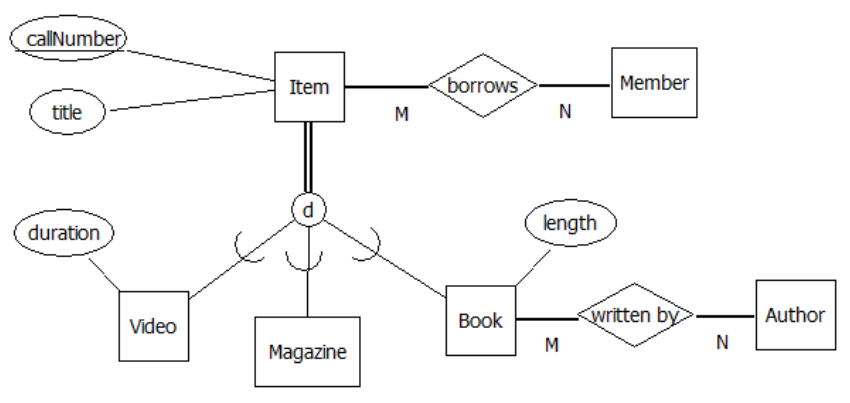12.3: Supertypes, Subtypes, and Attributes
- Page ID
- 15568
All entity types including supertypes and subtypes can have attributes. Continuing with our library example suppose:
- all items have a call number and a title, and call number is a key (each item has a unique call number);
- videos have a duration (time required to play);
- books have a length (number of pages).
Just as subtypes inherit relationships they also inherit any attributes of their supertype, and we also have that supertypes do not inherit the attributes of their subtypes. Attributes that are common to a supertype and its subtypes are only shown at the supertype. Consider our model now:

Our examples have been two-level hierarchies. In general a hierarchy can be as many levels as the designer requires. For instance books could be categorized as fiction and non-fiction and so book can be a subtype of item and at the same time a supertype of fiction and non-fiction.
Discriminator Attributes
It is common for designers to introduce or discover an attribute such that its value can be used to explicitly determine the subtype an entity belongs to. For example the item entity type can have an attribute, say itemType, which can have a value from the domain {“video”, “magazine”, “book”}. When this is done the diagram must include the attribute of course, but additionally the attribute is shown as a discriminator attribute for subtyping purposes and the pertinent value for discriminating shown as well.
Below you will see how these are laid out above and below the connection symbol.

This works well for disjoint subtyping but not necessarily for overlapping subtypes. When overlap is possible a designer may include a discriminator for each subtype, and so there are as many discriminator attributes as there are subtypes. Typically this is a boolean-valued attribute. In the overlapping case we not show discriminating values on the diagram.


